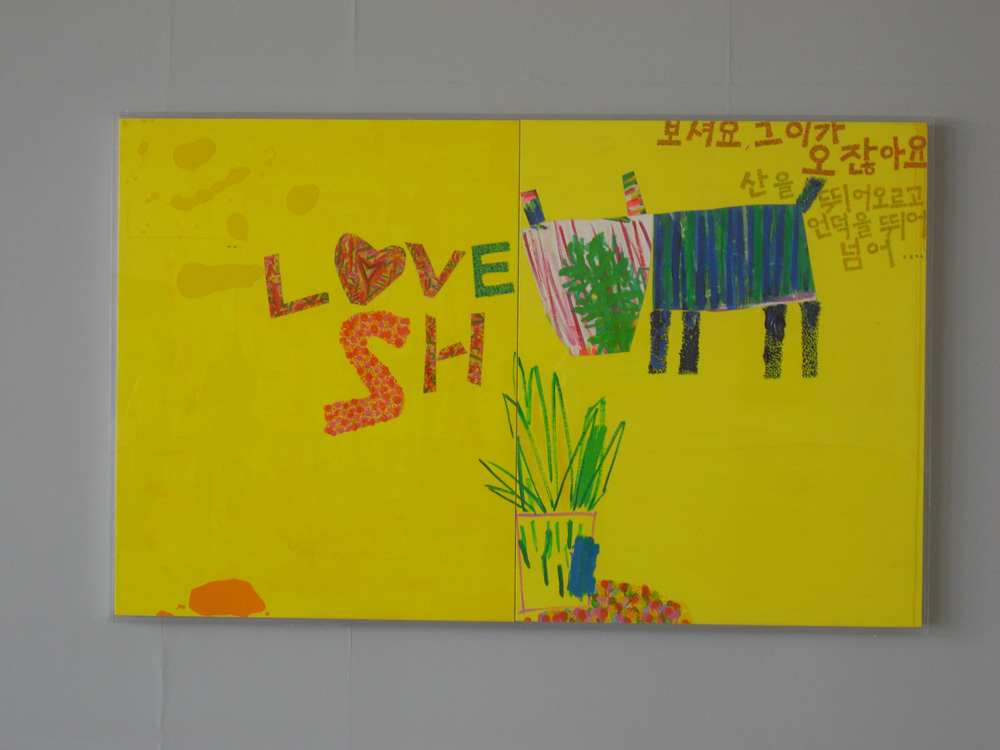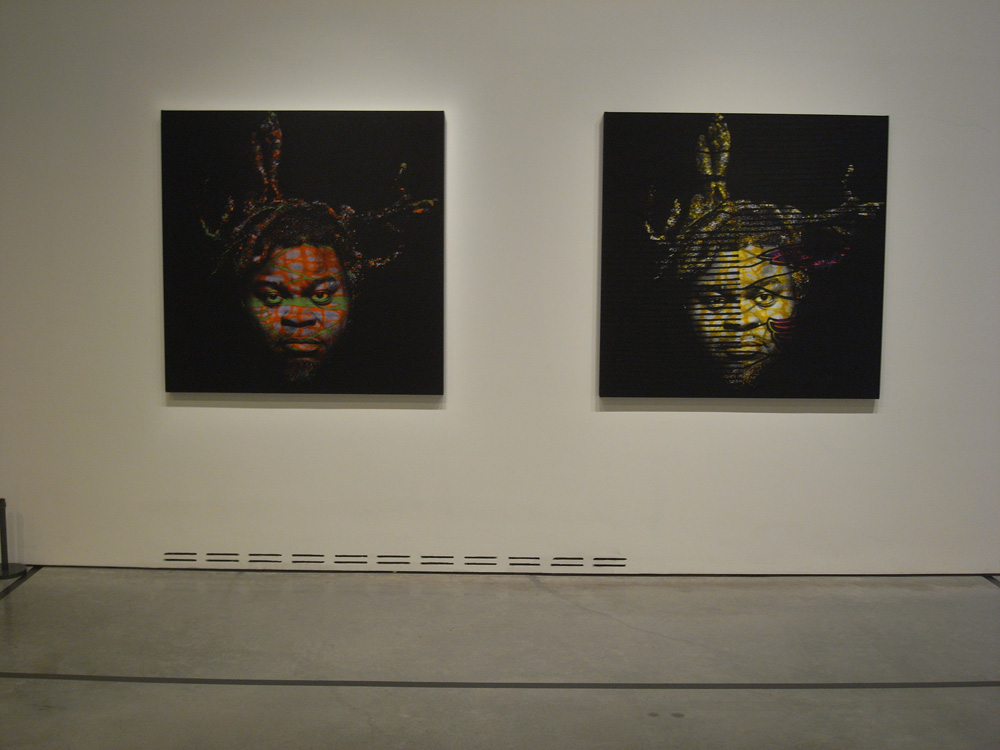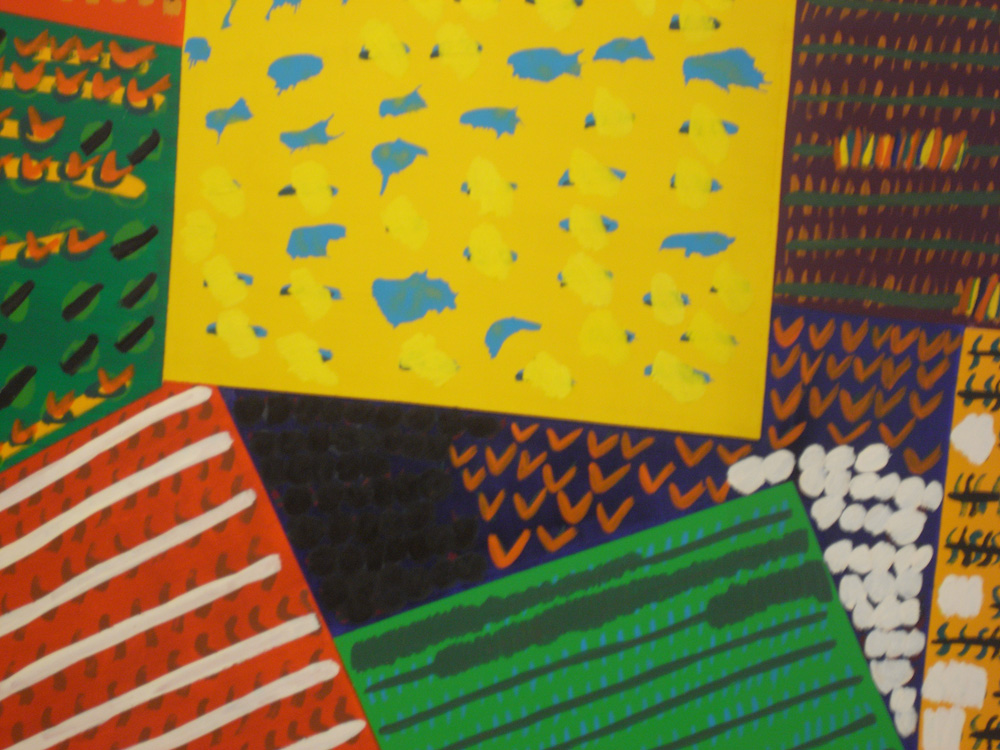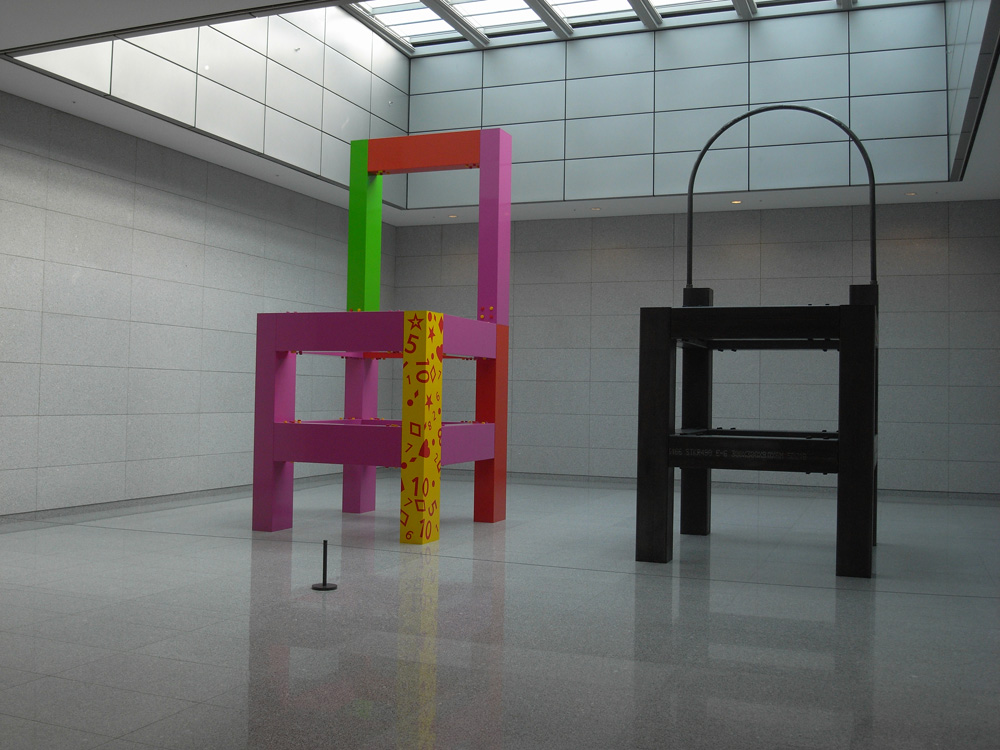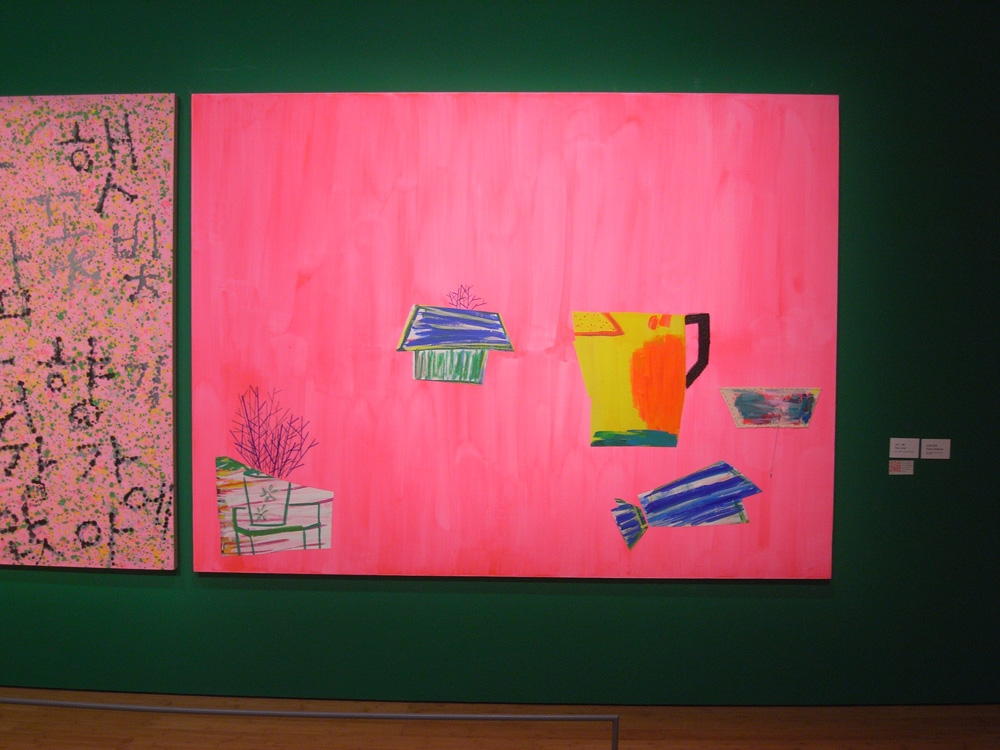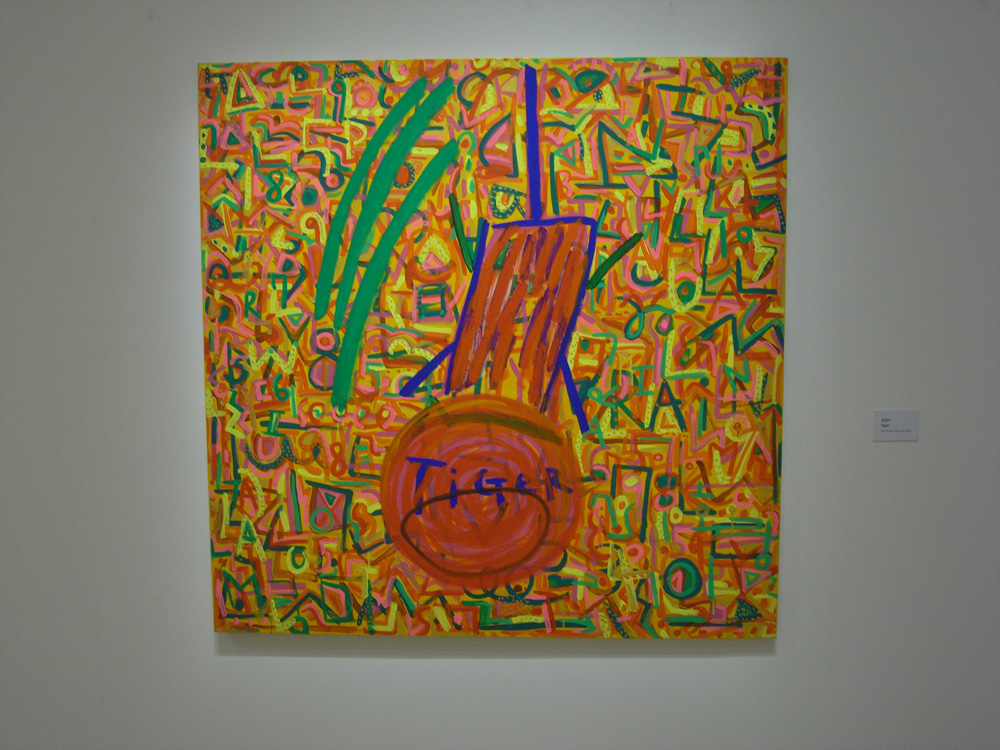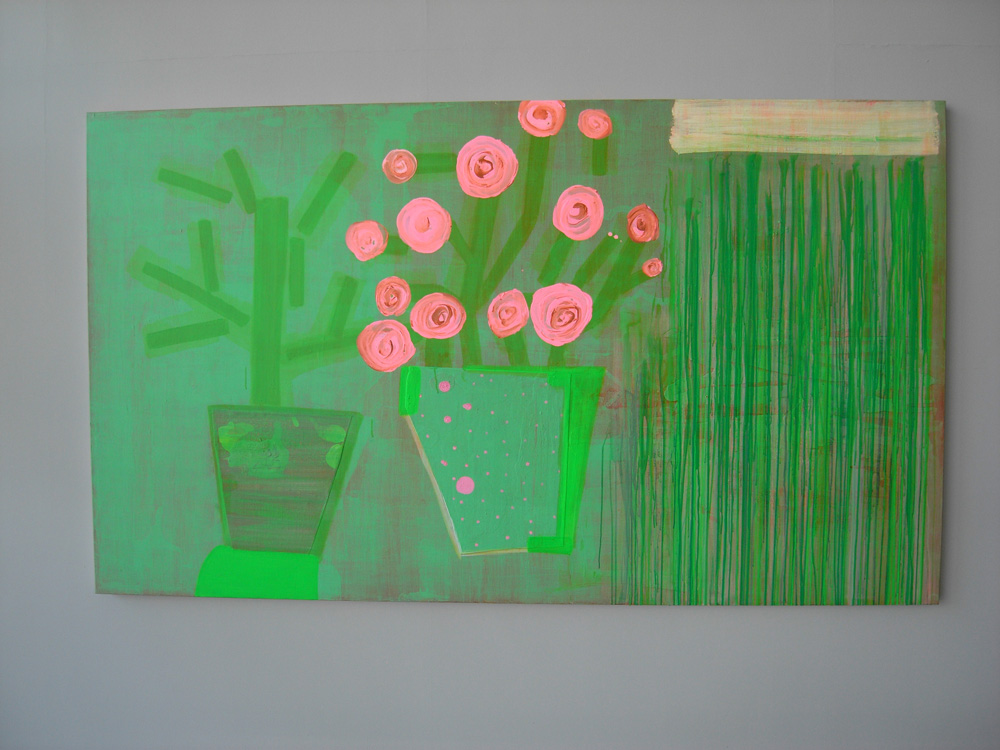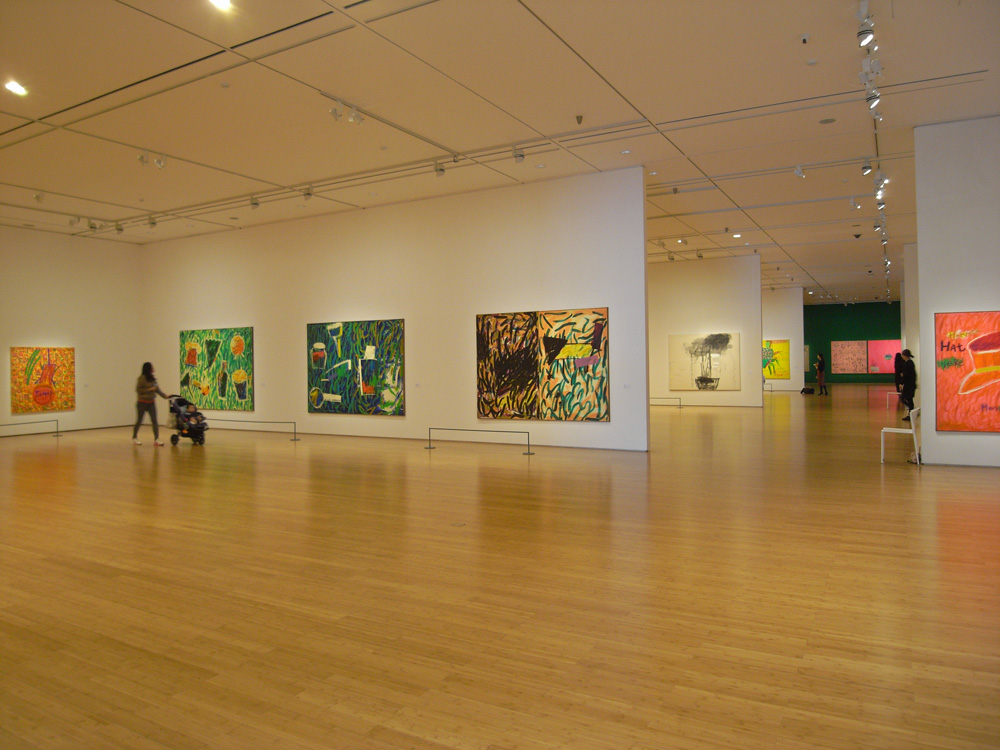Daegu, May 30 – October 18, 2015 (Shonibare), September 22 – February 9, 2016 (Lee), February 10 – Secember 6, 2015 (Hörl) http://www.daeguartmuseum.org
A trip outside of Seoul, and first a word of caution: It is not a good idea to make a one day bus trip from Seoul to Daegu. I have spent more than double of the time in the bus on the road than on site in Daegu.
Daegu Art Museum is located outside of the city itself, in a beautiful place surrounded by green hills that slowly start to change their color to yellow and orange these days. The location reminds a bit of Gwacheon MMCA on the border between Seoul and Gyeonggi-do. The museum looks quite new, probably a post 2000 construction from stone, glass and steel. During my visit, the museum was completely empty, eerily empty.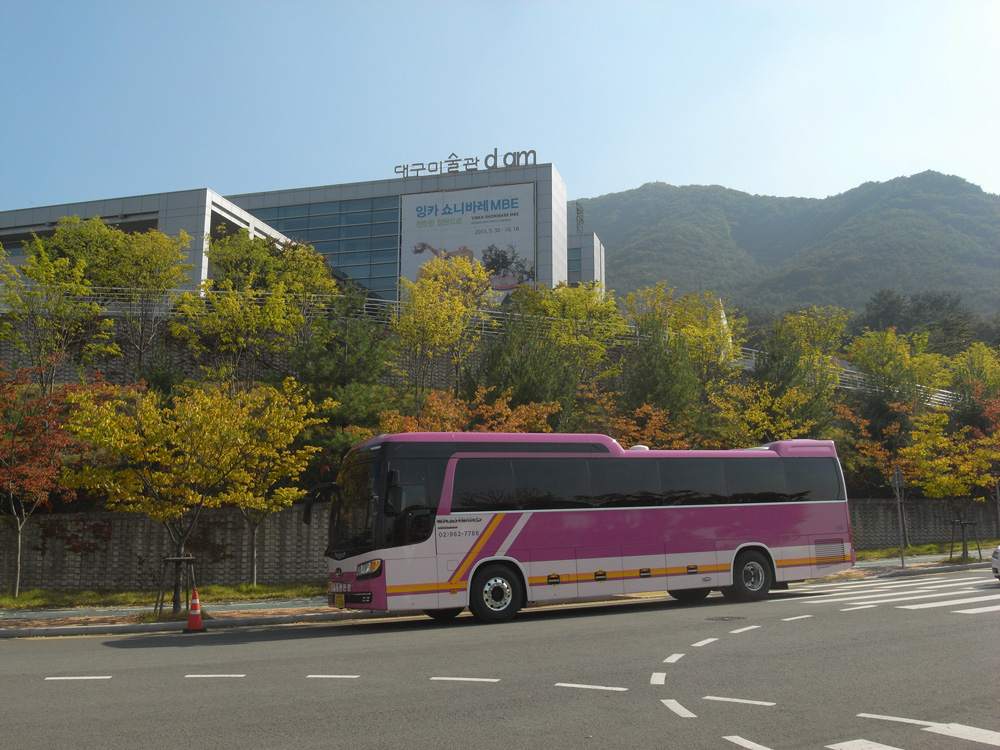
Outside of the museum was a grouping of Ottmar Hörl’s pink rabbit multiples. This work very much reflected the stereotype of the vulgar Asian taste for big and colorful works. I wonder who actually gets the connection to Albrecht Dürer or the idea of a multiple (or what about Beuy’s Hare?) For most visitors, it will probably simply be a pink rabbit, serving as a nice background for a photo of their children on a weekend trip.
Inside on the ground floor was a large show of British-Nigerian artist Yinka Shonibare. The work revolved around the theme of colonialism, post-colonialism etc. The artist created dresses using “African style” colorful patterns, but the cuts of the dresses were following European baroque style. The dresses were put on headless mannequins. Globes or lamps were used instead of heads. These colorfully dressed mannequins have been Shonibare’s trademark and they have been repeated and repeated until the whole museum floor was full of them. In addition to mannequins, the costumes were also featured in a number of video projections, worn by life actors, and in still photographs, displayed in baroque-style golden frames. Last but not least, there were collages on paper. The collage works were freer, taking clips from diverse news sources, bringing together topics like consumer culture, colonial history and immigration issues. An interesting part has been a number of collages referring to China’s celebrity culture and thirst for luxury brands.
While the artist certainly has merit, the overall impression was a bit bleak. It lacked a narrative and the colorful mannequins seemed to repeat themselves throughout the whole show in slightly different poses and with different props. In the end I found the collages the most interesting, as they showed a personal touch opening up avenues to glimpse the artist’s thought process, more than the constructed fusion of African baroque.
The text on the leaflet talked about the collective consciousness between Asian and African people’s “deep scars caused by imperialist plunders”. But I can hardly imagine any Asian felt a kinship looking at these works which were a complex mixture of historical European and African references (like photographs staged according to classical European paintings, that themselves contained a complex set of references). In the context of a deserted provincial museum, it looked more like a freak show.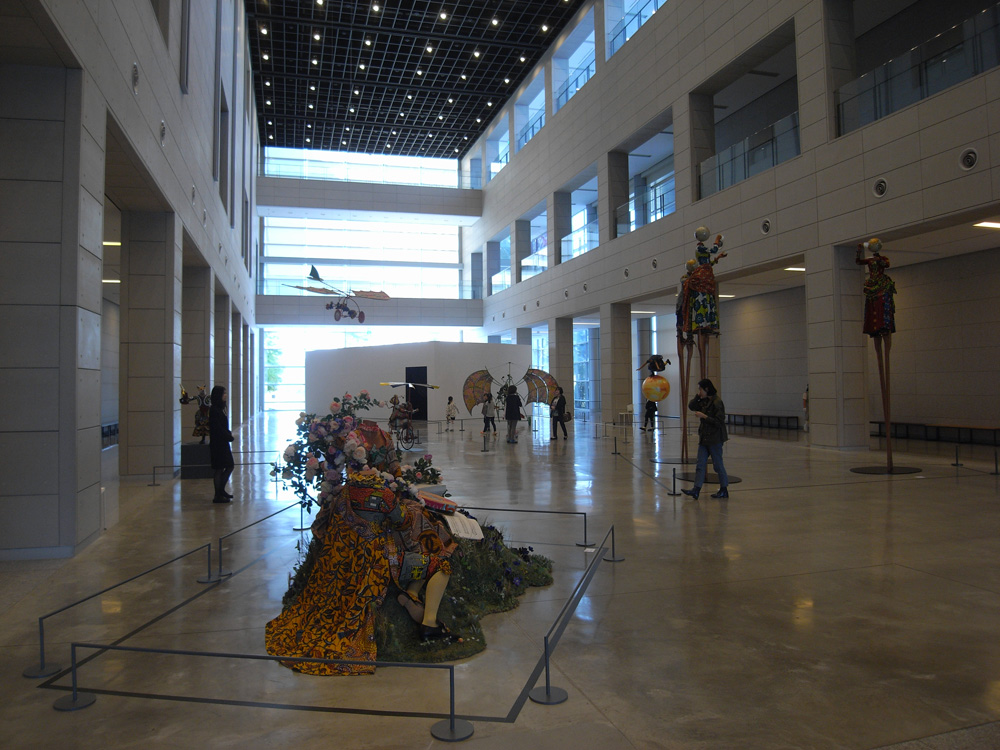
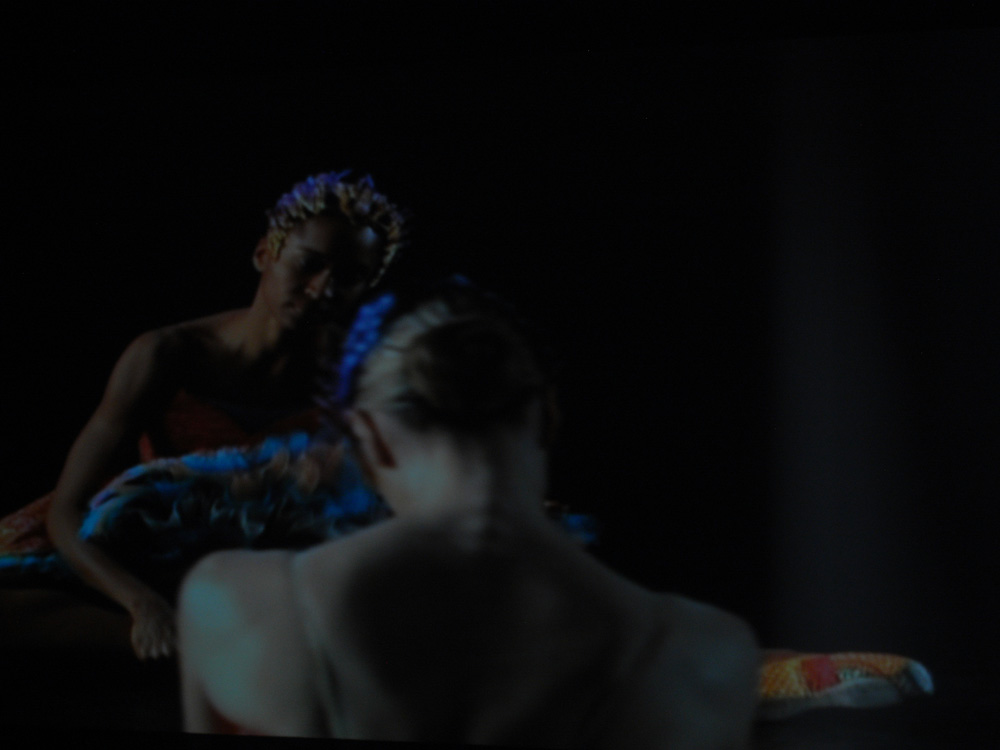
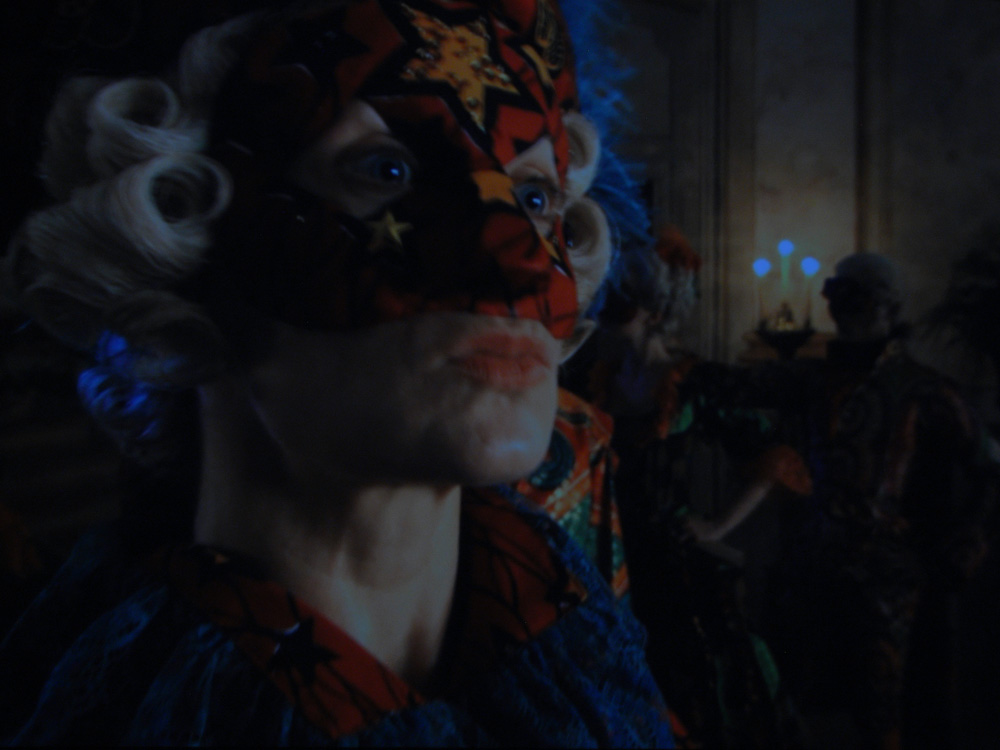

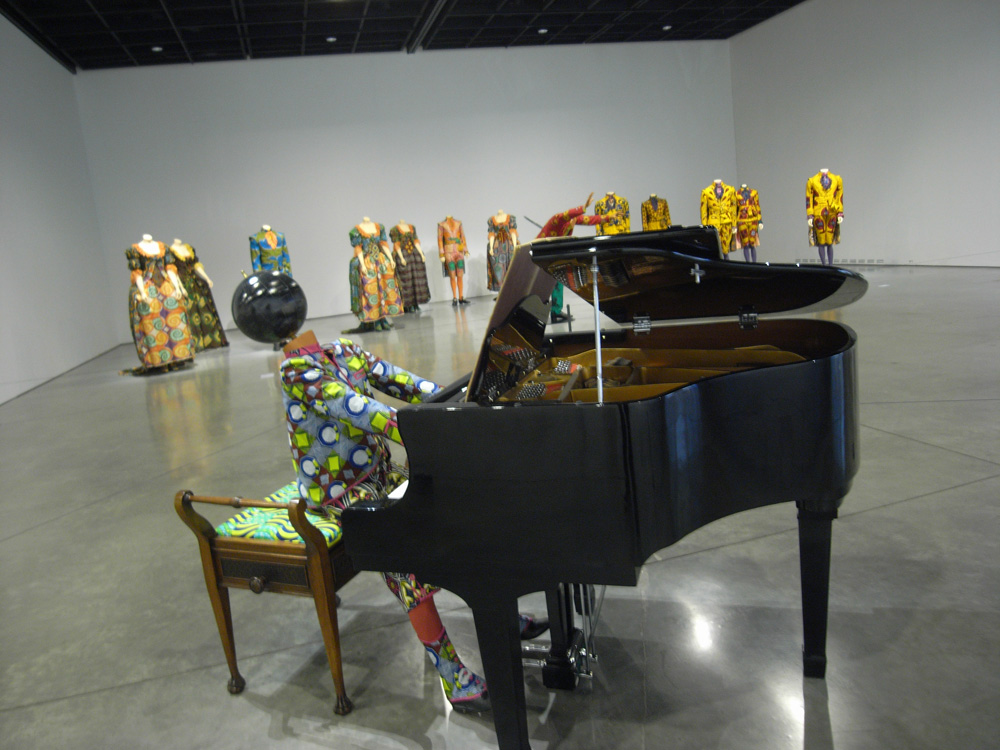
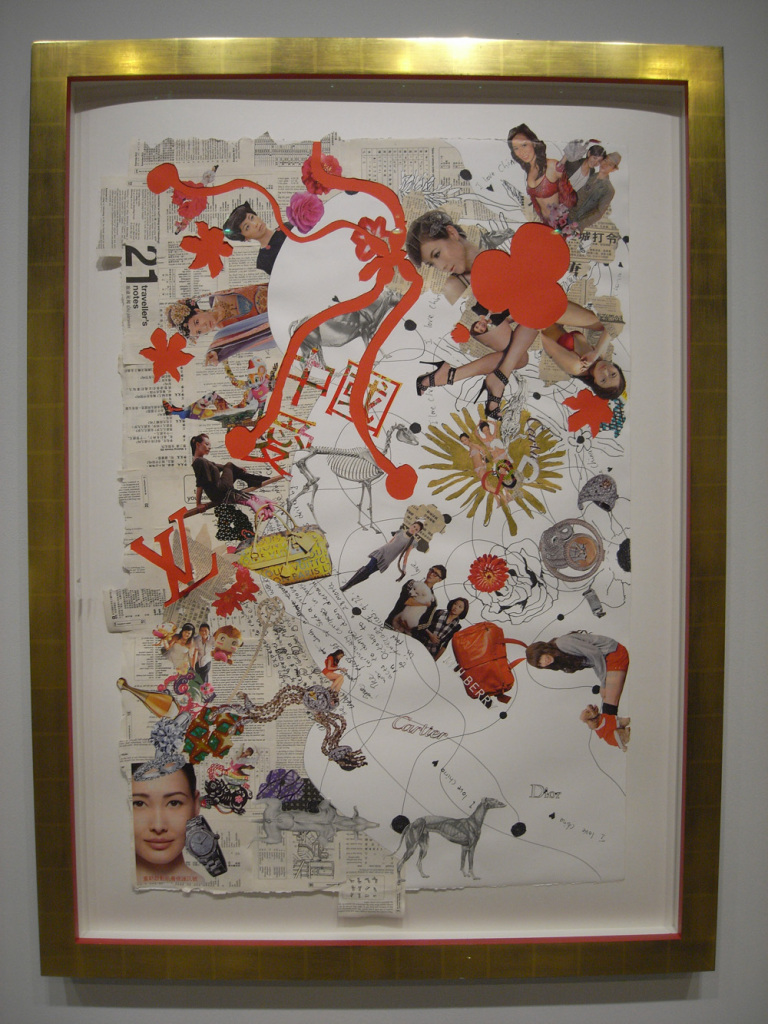
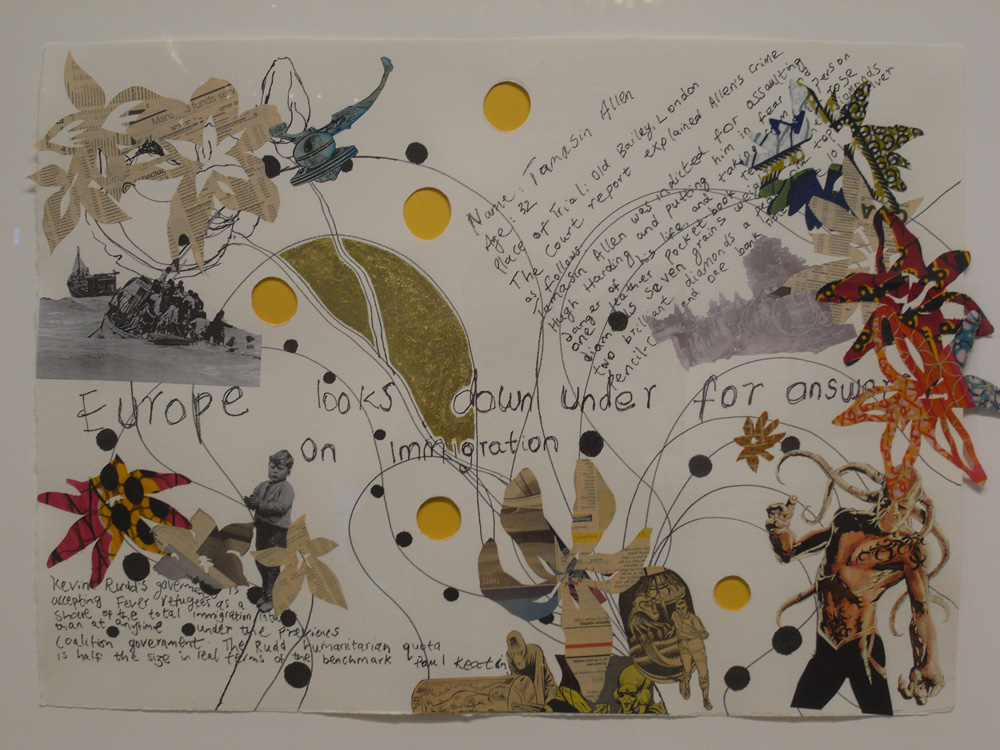
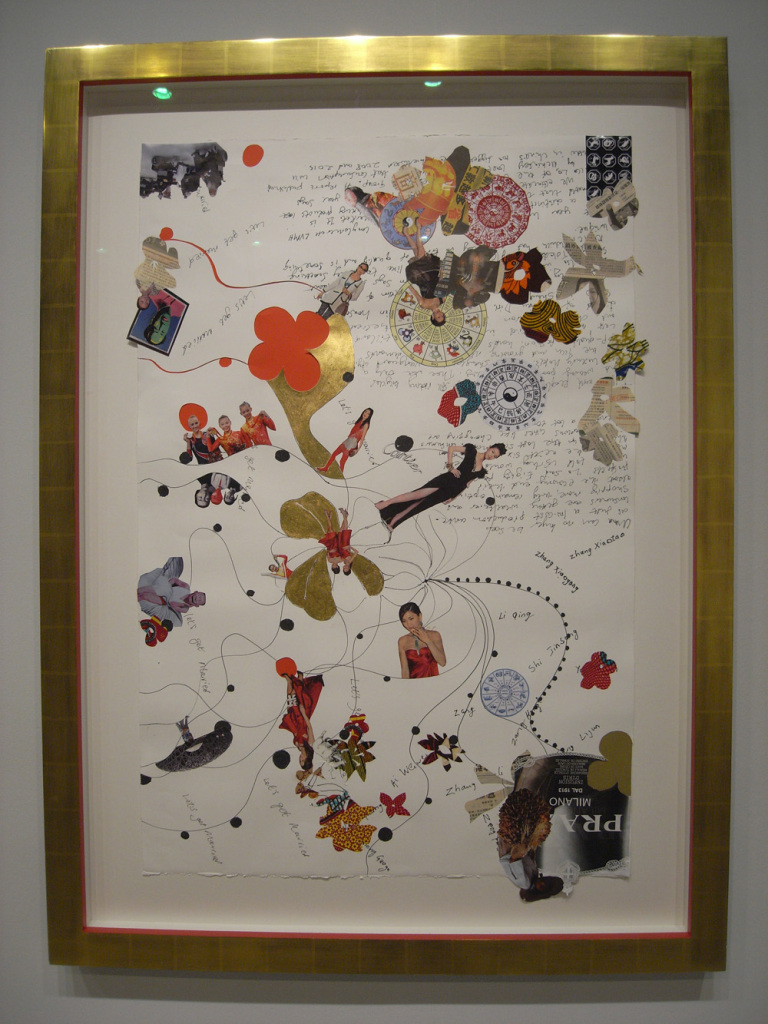

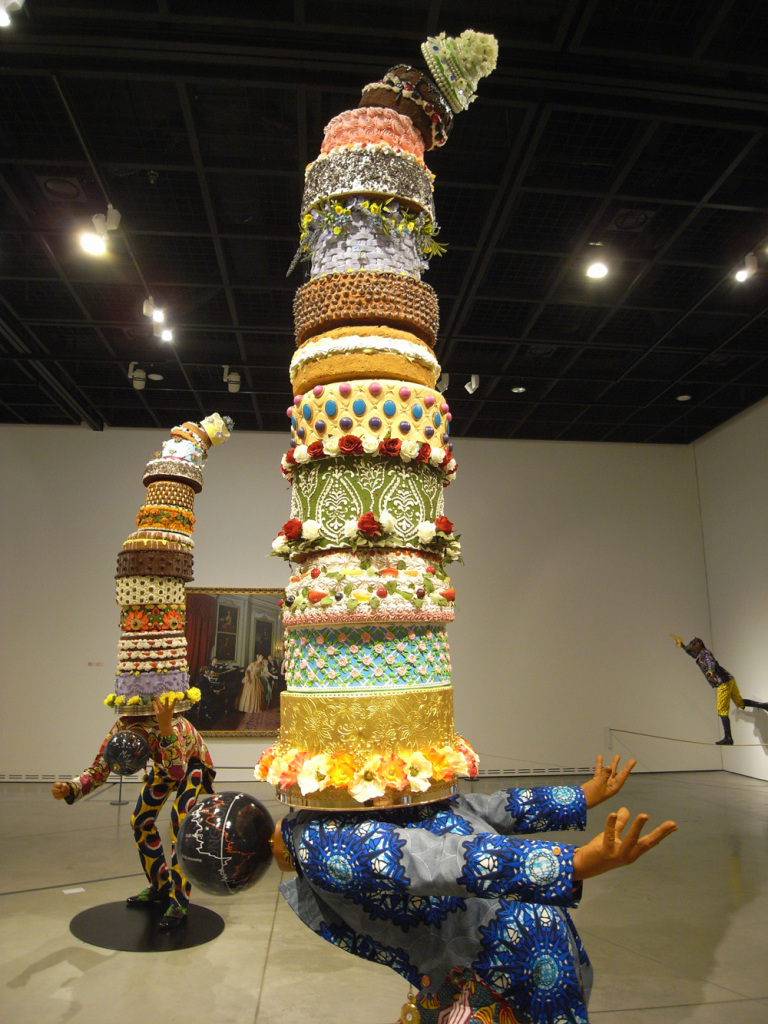
On the second floor strong colors prevailed in Lee Myungmi’s large paintings as well. Lee seems to be a local Daegu artist. The paintings on display covered mainly the last two decades and they were all using bright neon colors, reminiscent of neo-expressionism of Jean Michel Basquiat and Keith Haring’s pop art. It was something refreshing to look at, but there has not been much of a variety. I spent some time trying to search for older works, so that I could get a feel for changes the artist went through, but sadly there have been very few older paintings available. In the few older paintings (from late 1970s), one could see an inspiration that I think comes from traditional Korean textile patterns (especially quilts). From this finding, I then also managed to create a link between the bright colors of her latter works and the bright colors of the traditional hanbok dresses (dresses Koreans refer to as “traditional” but whose colors seem very ‘modern’ to me). In the latter work, the bright colorful backgrounds are overlaid with simple text lines in Korean, which I could not understand, but I assume they will be equally banal as the object depicted: Household items, furniture, animals and scribbles.
The combination of Asian “folk” art love for strong colors and contrasts, with mudane objects and ‘pop’ visual was pleasant, if one’s eyes could endure the constant color attack of the paintings.
The presence of strong colors and big shapes was something that connected all the exhibitions at the Daegu Art Museum. This may have been a coincidence, but it left an impression on me. It would be nice to see more variety. Obviously a lot of people like big things and bright colors, and it is a kind of stereotype of being “artistic”, but not all art is like that an a big museum like DAP should consider presenting a range rather than a style.
